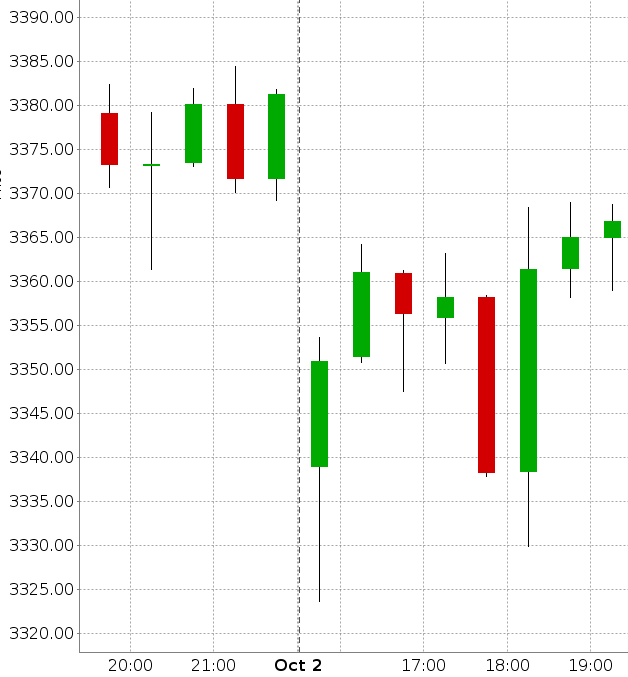
There's a lot of talk about so-called gaps. General wisdom says they will be closed. But is that true? Is there a statistical edge about gaps that we can use in our trading? Let's find out.
Let's first start with some definitions:
- opening gap up: the price open is higher than the price high of the previous day
- opening gap down: the price open is lower than the price low of the previous day
 |
 |
| Opening gap up left open (for clarity further bars have been left out, but they didn't close the gap either) |
Opening gap down closed on the second 30-min bar |
To be clear, this is something different than the price open is higher (or lower) than the previous day close. This happens almost every day, price open is almost never the same as the previous day's close.
We're now interested in what happens most often after an opening gap during that trading session. For this research, we're looking at almost 7000 trading days of the S&P 500. These are the numbers that came up:
| Event | Number | Percentage |
| Gap up | 1500 | 21% of total trading days |
| Gap up closed the same session | 1027 | 68% of gaps up |
| Gap down | 931 | 13% of total trading days |
| Gap down closed the same session | 684 | 73% of gaps down |
There's no denying, there is a clear bias towards closing an opening gap. And it is probably due to the overall bullish nature of the stock market long-term, that there are more gaps up than down. The closing percentage is roughly the same, no matter if it's a gap up or down.
But let's look closer because we have counted each and every gap, small and big.
| Average size opening gap up | 0.33% |
| Average size opening gap down | -0.45% |
| Average daily range of the S&P 500 | 1.37% |
When you look at those numbers, then the closing-gap wisdom disappears. The normal average daily range accounts easily for closing most (small) opening gaps. In other words, an opening gap does not pull price inwards, it is just our brain interpreting this movement as a causal effect.
In another post, Science of irrationality, in the last paragraph, I mentioned the famous experiment by B.F. Skinner. He made the pigeons in his experiment believe there was a causal connection between their behavior and the supply of food. But there wasn't any, the food was provided at exact regular intervals.
Next time, we're going to look at what comes next when an opening gap is not closed during the same session.